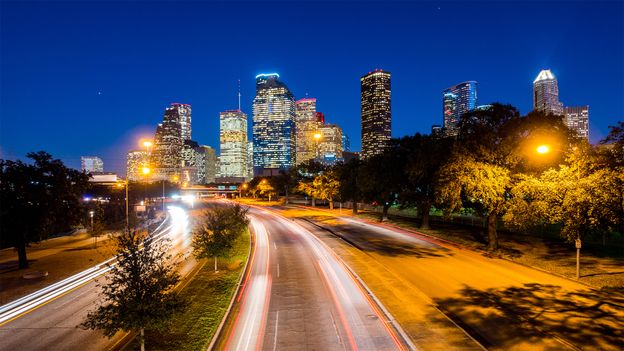- cross-posted to:
- upliftingnews@lemmy.world
- texas@lemmy.world
- cross-posted to:
- upliftingnews@lemmy.world
- texas@lemmy.world
About two billion birds fly through Texas in the spring – and lit-up buildings pose a deadly risk. Turning out the lights at night could save countless fatal collisions.
It was a foggy Thursday morning when animal services supervisor Josh Henderson received news of a mass mortality. On May 4, 2017, 395 migratory birds died after smashing into one office tower in Galveston, Texas. Henderson rushed to the scene to witness the gruesome spectrum of feathers from yellow and orange to blue and grey of the lifeless small-featured bodies.
“It was awe-inspiring and tragic,” says Henderson, who is now the executive director of the Humane Society in Galveston.
…
In 2020, Cornell, Houston Audubon and a range of other organisations joined forces to start the “Lights Out, Texas!” campaign, which encourages building owners, developers and businesses to switch off non-essential lighting from 11pm to 6am each night during spring and autumn migration. Timed for around March-June (spring migration) and August-November (autumn migration), the campaign aims to help create a safe passage for nocturnally migrating birds. Since then, Lights Out Texas has taken hold in every major city in Texas. The state is considered an especially important place for the campaign given its position as a mass bird migration hotspot.
…
Around 24 communities in Texas have pledged to follow the Lights Out recommendations.
Early data collection suggests that Lights Out is effective, says Chloe Saucedo Crumley, the public affairs and engagement manager at Audubon Texas. After tracking the bird crashes at Chicago’s towering McCormick Place over 20 years, researchers found a 60% decrease in bird mortality when lights are turned off.
Never ceases to amaze me how entire floors are lit all night long while unoccupied. What a waste of energy. Doesn’t matter if it’s left on for janitorial staff, they can be shown where the “off” switch is. Businesses often pay a flat rate for power, so they see no reason to shut the lights off as their bill doesn’t change one way or the other.
It was especially infuriating in Austin during the snowpocalypse when entire neighborhoods were without power (and heating) and you can see the empty (because pandemic) downtown area lit like a christmas tree in the background.
They may have generators to keep things like servers online. Or it may just be capital gets protected and the average person gets hosed. It was the same story when NYC had that big blackout a while back. People lost all their food and were sweltering, but Times Square was still all lit up.
It is very common for businesses to have service level agreements with utility companies that are on a higher priority grid tie than regular pleb utilities. Business Internet often has higher priority than consumer, business cellular often has higher priority, etc. We citizens are last place in our nation.
Texas cares about wildlife?
Texans care, individually.
“No, our power grid isn’t failing again, it’s, um… Protecting migrating birds! Yeah, that’s the ticket!”
Wait, I thought it was the windmills killing birds. That’s what Trump said. You mean Texas is going to keep its over 15,000 wind turbines?
Maybe, oil and gas companies are trying to kill clean energy.
I was curious why this is effective.
The influence of artificial light in urban spaces is a well-known phenomenon among birds, but is still not fully understood. Birds tend to migrate by night, and use the stars to navigate. By day, they use the position of the Sun to orient themselves. During nocturnal migration, they are often seen gathering around or crashing into lit-up windows and structures, or gathering around beams of projected life. The artificial glow of cities also appears to attract them for stopovers. One explanation is that they may generally fly towards light sources, but also, that the artificial light confuses, traps and disorients them.
I wonder if it’s a deer in the headlights effect or more like moths?
Prolly more like moths, except moths try to keep the light on their backs as opposed to their forward position.






